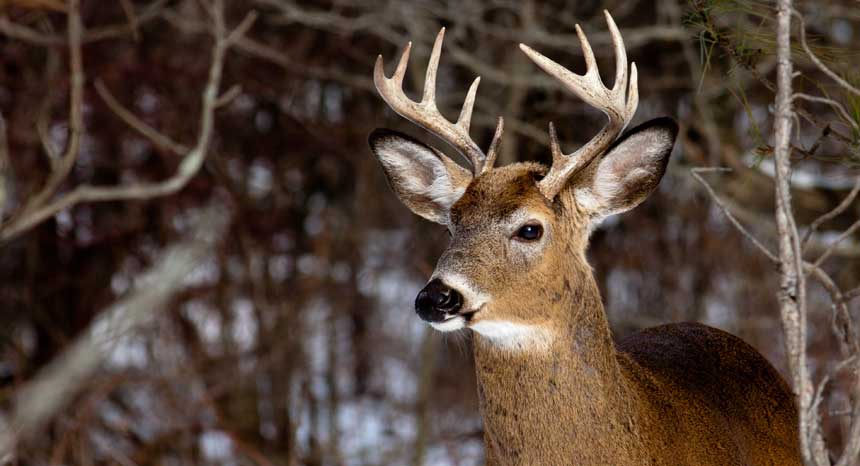(Homesteading.news) (BPT) – With 2015 breaking records as one of the warmest years ever in the U.S., you’ll soon be seeing an unhappy side-effect of the mild weather; more deer will be browsing your backyard when the weather gets warm.
Most of us have seen more acorns, a bumper crop in fact, that provided deer with an easily accessible, plentiful food source which helped them get through winter in good shape. They’re healthy and will be ready to birth plenty of fawns come spring. This season we’ll see deer populations rise in suburbia across the country.
Don’t discount deer’s intelligence, they’re smarter than you think; they actually possess a memory of negative experiences, learn from them and adapt their habits accordingly. Deer know they’re greatly exposed to danger due to hunters and predators in woodlands and have moved right to the edge of woodlands, in close proximity to suburban neighborhoods, where they’ve learned they’re safe. They’re also smart enough to know danger is not present or even threatening in suburbia and they will remember your bountiful backyard food sources, too. Once in your yard, you can count on deer damage to your trees, shrubs, gardens and landscapes that you’ve invested much time, money and effort in.
The damage to residential landscapes, crops and timber from deer foraging ranges around $1 billion annually. With a single deer capable of eating a ton and a half of vegetation per year, just one or two deer can cause significant damage.
Deer don’t have to devastate your yard this spring and summer, according to Scott C. Williams with the Department of Forestry and Horticulture at The Connecticut Agricultural Experiment Station. “You can definitely use deer’s intelligence against them to trick them right out of your yard. Just as they learn where to find safe, reliable food sources, you can “train” deer to avoid any specific area.”
Negative conditioning works well to deter deer from your yard, but it’s important to choose a strategy that outsmarts them continuously. Scare tactics such as dogs barking, canned noise and scarecrows have limited effects, as deer quickly learn there’s no real harm associated with these “threats.” Fences also have limitations; deer can easily jump over any fence lower than 8 feet and few neighborhoods will approve a fence of that height.
“A product that combines scent and taste deterrents, will be most effective in keeping deer away from suburban landscapes,” Williams says. “Deer will remember the unpleasant smell and taste of your backyard’s food source and they’ll pass by your yard rather than eat something they’ve already been conditioned to learn will be distasteful.”
Bobbex Deer Repellent is such a product that combines scent and taste deterrents. Testing by the Connecticut Agricultural Experiment Station proved Bobbex is more effective than nine other commercial repellents (including coyote urine), scoring a 93 percent in protection, second only to a fence at 100 percent. The all-natural repellent blends six scents, including rotten eggs, garlic, fish, clove oil and vinegar (among other things) to mimic predator scents, classifying it as an effective fear repellent. It also tastes terrible to deer, but is actually good for plants because it contains elements high in nitrogen and phosphorus. The product dries clear, is harmless to humans and pets, won’t burn plants and its odor, after 24 hours, is undetectable to humans.
You can easily apply Bobbex with a simple trigger or pump spray, according to label directions, and school deer to pass you by. Best practice is to use the product throughout the entire year, since deer and their ability to devastate your yard, are never out of season. Continued use will ensure protection of plants and landscapes and constantly reinforce to the deer that your backyard doesn’t offer any good, tasty sustenance. Visit www.bobbex.com to learn more.
Although deer are smart enough to spot easy food sources, it is possible to humanely and effectively keep them out of your backyard all year. It’s a simple matter of using their smarts to outsmart them and convince them they’re better off looking elsewhere for food.
Check out this video on the research that went into this here:
Homesteading.news is part of the USA Features Media network.


